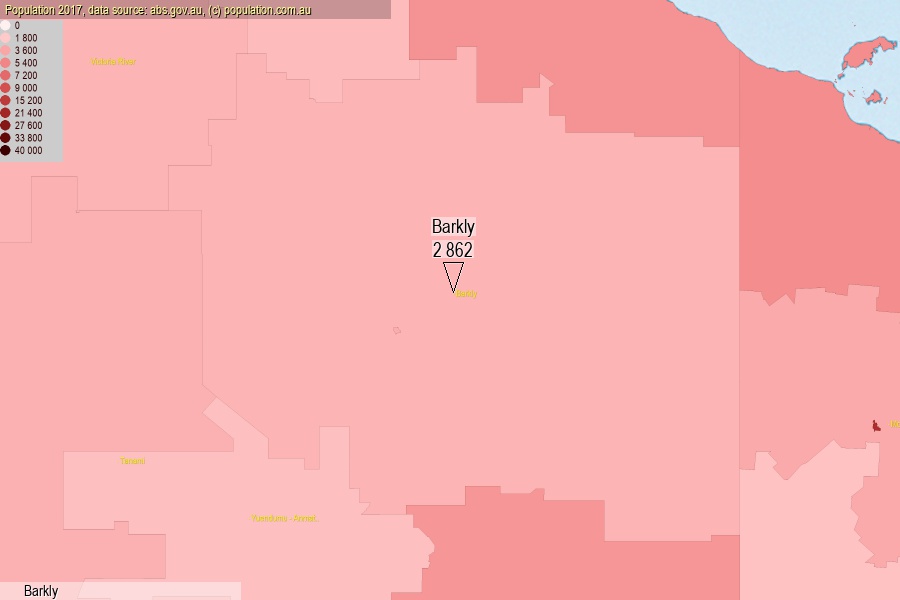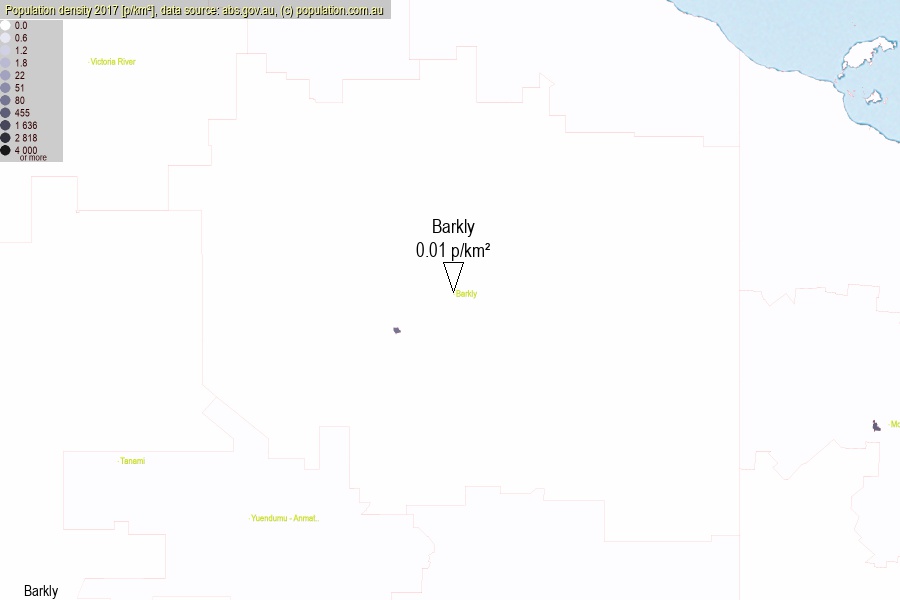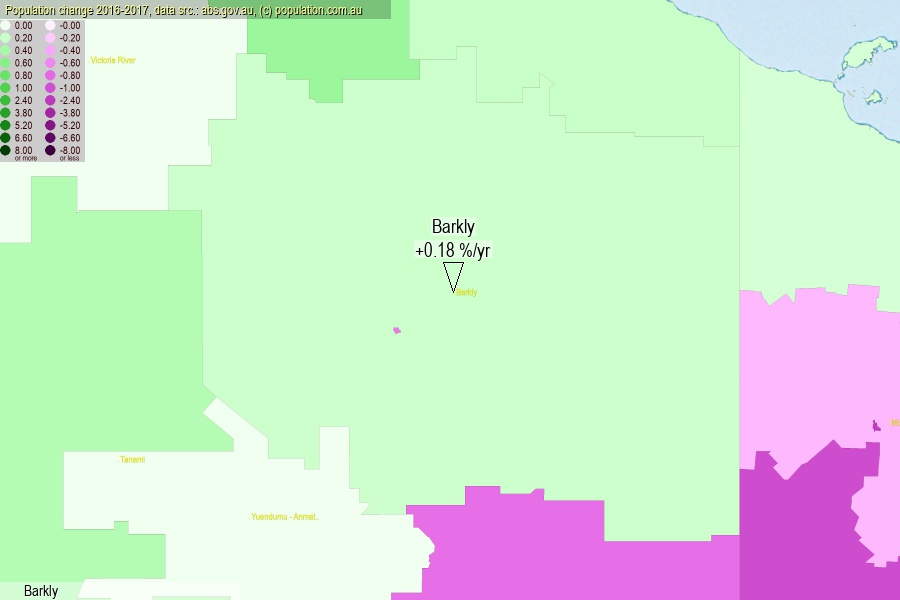 population.com.au
population.com.auLast official estimated population of Barkly (as Statistical Area Level 2) was 2 862 people (on 2017-06-30)[2]. This was 0.01% of total Australian population and 1.16% of NT population. Area of Barkly is 303 171.90 km², in this year population density was 0.01 p/km² . If population growth rate would be same as in period 2016-2017 (+0.18%/yr), Barkly population in 2025 would be 2 902. [0]



Click to enlarge. Barkly is located in the center of the images.
Population [people], population density [p./km²] and population change [%/year] [2]
View borders » (new window) [4]
[1991-1992] +0.33 %/Yr.
[1992-1993] +0.44 %/Yr.
[1993-1994] +0.65 %/Yr.
[1994-1995] +1.87 %/Yr.
[1995-1996] +2.71 %/Yr.
[1996-1997] +2.02 %/Yr.
[1997-1998] +0.20 %/Yr.
[1998-1999] +0.17 %/Yr.
[1999-2000] -0.37 %/Yr.
[2000-2001] -0.71 %/Yr.
[2001-2002] -1.93 %/Yr.
[2002-2003] -2.86 %/Yr.
[2003-2004] -1.60 %/Yr.
[2004-2005] +0.29 %/Yr.
[2005-2006] +0.90 %/Yr.
[2006-2007] +1.64 %/Yr.
[2007-2008] +2.25 %/Yr.
[2008-2009] +2.20 %/Yr.
[2009-2010] +1.38 %/Yr.
[2010-2011] +1.06 %/Yr.
[2011-2012] -0.98 %/Yr.
[2012-2013] -1.06 %/Yr.
[2013-2014] -1.41 %/Yr.
[2014-2015] -0.41 %/Yr.
[2015-2016] -2.62 %/Yr.
[2016-2017] +0.18 %/Yr.
[0] Calculated with linear interpolation from officially estimated population
[1] Read more about SA2 and Australian Statistical Geography Standard (ASGS) on abs.gov.au
[2] Population data from Australian Bureau of Statistics (Population and density: 2017; change: 2016-2017)
[3] Digital Boundaries: Australian Statistical Geography Standard (ASGS) 2016.
[4] Border coordinates are simplifyed using Ramer-Douglas-Peucker algorithm.